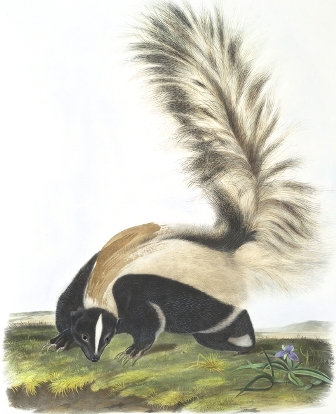Making Scents of Smells
Genesis 27:27
“And he came near, and kissed him: and he smelled the smell of his raiment, and blessed him, and said, See, the smell of my son [is] as the smell of a field which the LORD hath blessed.”
How many different scents do you think your nose is able to smell? The answer is about 10,000. How does your nose tell the difference between a rose and a skunk? Until only recently, scientists really weren’t sure.
 Now we know that humans and mammals detect smells by using at least 1,000 different genes. These genes are located in every cell in your body, but they are active only in your nose. This discovery, say scientists, gives them their first insight into how smell works. Before this, said one scientist, “We had almost no knowledge of the olfactory system and this really opens up the molecular study of smell in a very fascinating way.”
Now we know that humans and mammals detect smells by using at least 1,000 different genes. These genes are located in every cell in your body, but they are active only in your nose. This discovery, say scientists, gives them their first insight into how smell works. Before this, said one scientist, “We had almost no knowledge of the olfactory system and this really opens up the molecular study of smell in a very fascinating way.”
They say that each of the different genes seems designed to respond to a small group of odors. As each group of genes does its part, the entire system is able to recognize everything we can smell. These genes pass signals from the nerve cells in the nose to a small region of the brain called the olfactory bulb. Now that smell genes are identified, researchers say they can begin to understand how odors are detected and how the brain interprets those signals.
Our sense of smell relies on a very elegant and sophisticated system. Imagine, 1,000 genes lie at the heart of that system. Each one of those genes is information – a programmed code that is designed to make sense of what we smell. Information, programming and decoding are all terms that assume that we have a highly intelligent Creator who designed our sense of smell!
Prayer:
Father in heaven, I thank You for my ability to detect scents. As scientists continue to learn how You designed our sense of smell, cause them to recognize Your genius and so be drawn to the cross of Jesus Christ. Amen.
Notes:
“Scientists find genes that let nose make scents of what it smells.” Minneapolis Star-Tribune. Apr. 5, 1991. p. 7A.